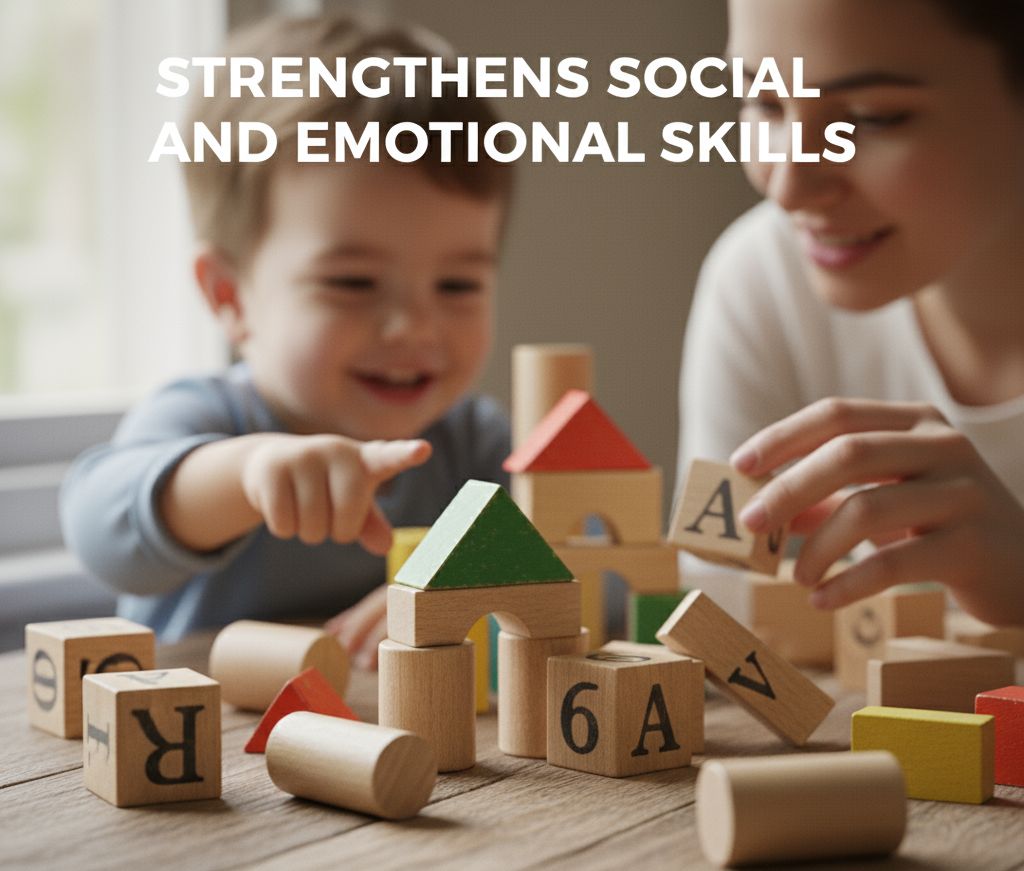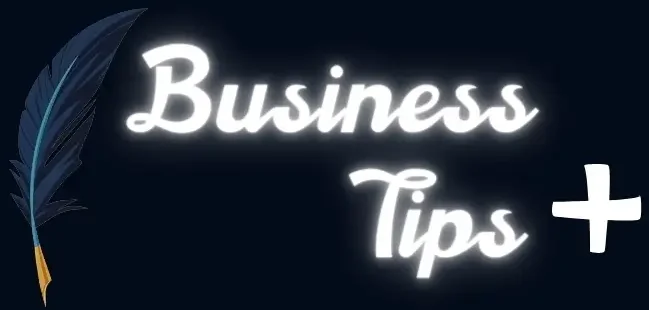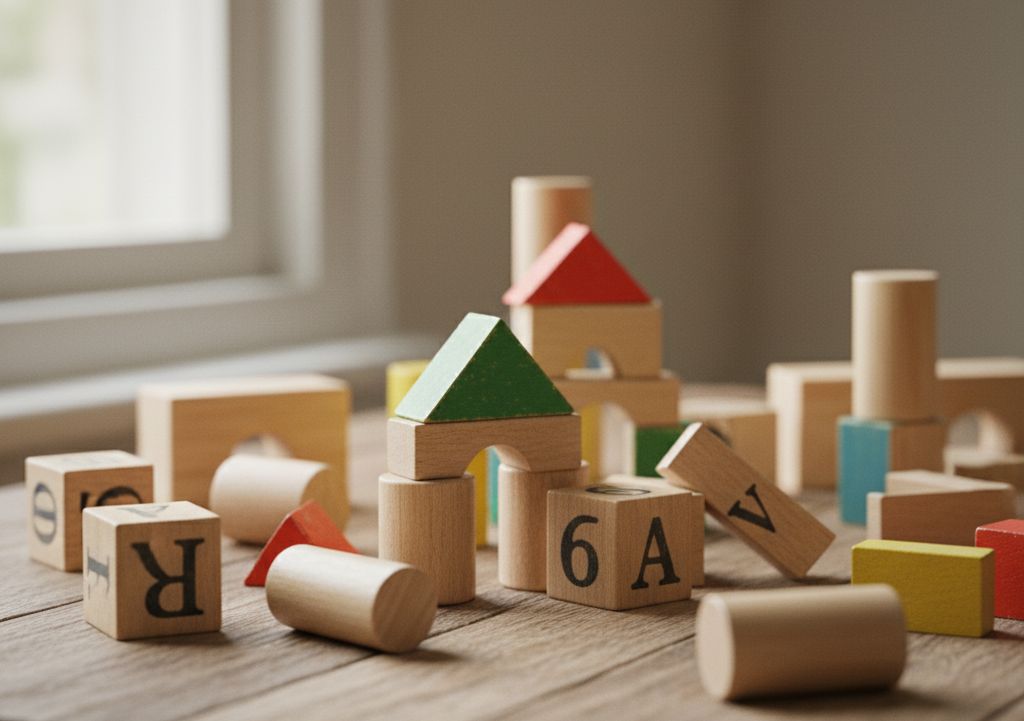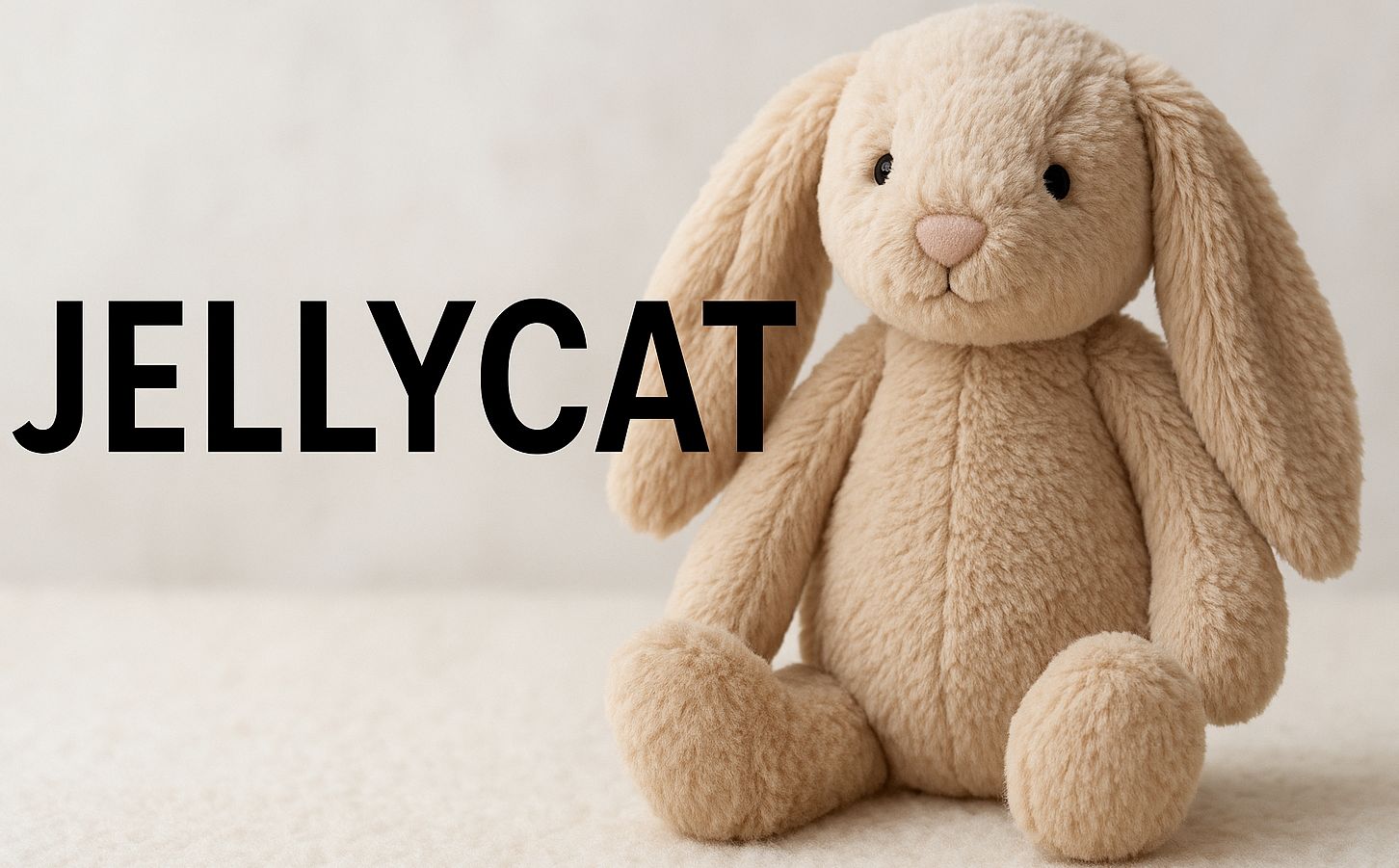Table of Contents
Introduction: Rediscovering the Magic of Wooden Blocks
Wooden Blocks: In a world filled with flashing screens and plastic gadgets, wooden block remain a timeless classic that continues to inspire creativity and imagination. For generations, children have stacked, balanced, and constructed worlds of their own using simple blocks of wood. What makes wooden blocks so enduring is their blend of simplicity, safety, and educational value. Unlike digital toys, these humble creations invite hands-on learning, helping children develop fine motor skills, problem-solving abilities, and imaginative thinking.
This article explores why wooden toys—especially building blocks for kids—are more than just playthings. They are tools for growth, creativity, and sustainable play that parents around the world trust.
1. Timeless Appeal That Never Fades
From ancient civilizations to modern Montessori classrooms, wooden blocks have been a staple in child development. Their natural texture and durability make them ideal for toddlers and preschoolers. Unlike battery-operated toys that quickly lose their charm, wooden blocks offer open-ended play.
Children can build towers, bridges, castles, or anything their imagination allows. Every play session is different. This timeless nature ensures that wooden blocks remain a favorite across generations, bridging the gap between classic play and modern education.
2. Encourages Creativity and Imagination
One of the most beautiful things about educational wooden block is their open-ended design. There are no instructions, no limits—just pure imagination. A few pieces of wood can become a zoo, a city skyline, or even a rocket ship.
Open-ended play helps children express themselves creatively while developing storytelling and planning skills. Parents and teachers often find that kids who engage in block play become better problem solvers and thinkers. The beauty lies in simplicity—no two creations are ever the same.
3. Promotes Early Learning and Cognitive Growth
When children build with wooden building blocks, they’re not just having fun—they’re learning. Every time a child stacks, sorts, or balances blocks, they’re strengthening their spatial awareness, hand-eye coordination, and logical thinking.
Educators have long recognized the value of Montessori blocks for teaching basic concepts like counting, shapes, balance, and symmetry. When kids experiment with different structures, they learn cause and effect—understanding that stability depends on how they place each piece.
In early education programs, wooden blocks are essential tools for nurturing curiosity and cognitive growth.
4. Safe, Non-Toxic, and Eco-Friendly
Safety and sustainability are top priorities for modern parents, and wooden toys check both boxes. Most wooden blocks are made from natural, sustainably sourced wood and coated with non-toxic finishes. Unlike cheap plastic toys that can break or release harmful chemicals, wooden blocks are durable and safe for even the youngest learners.
Eco-conscious families also appreciate that wooden toys are biodegradable and can be passed down through generations. Choosing eco-friendly wooden blocks means supporting both your child’s well-being and the planet.
5. Strengthens Social and Emotional Skills

Block play is more than just an individual activity—it’s a social experience. When children play together, they share ideas, negotiate roles, and collaborate on building projects.
This type of play fosters teamwork, patience, and empathy. It teaches children how to express their emotions constructively and respect others’ ideas. Whether in a preschool classroom or a family living room, wooden building blocks create opportunities for shared joy and learning.
6. Supports Montessori and Waldorf Education Principles
Both Montessori and Waldorf education emphasize learning through discovery and sensory engagement. Wooden blocks fit perfectly within these philosophies.
In Montessori classrooms, blocks are used to teach math concepts, spatial relationships, and logical sequencing. Waldorf education, on the other hand, focuses on nurturing imagination through natural materials and free play.
Wooden blocks support these values by encouraging self-directed learning. They’re not just toys—they’re learning instruments that foster curiosity, patience, and independent thinking.
7. Built to Last for Generations
One of the most underrated benefits of wooden blocks is their longevity. A quality set of blocks can last for decades, surviving drops, bites, and enthusiastic play sessions. Unlike electronic toys that become obsolete, wooden blocks never need charging or updating.
Their durability makes them ideal for passing down from one generation to the next, carrying sentimental value and cherished memories. When cared for properly, they become part of family tradition—symbols of creativity and childhood joy.
Choosing the Right Wooden Blocks
With so many options available, choosing the best set of wooden blocks depends on your child’s age and interests. Here’s a quick guide:
- For Toddlers (Ages 1–3): Choose larger, rounded blocks that are easy to grasp and safe to mouth.
- For Preschoolers (Ages 3–5): Opt for colorful, shape-based sets that encourage sorting and pattern recognition.
- For Older Kids (Ages 5+): Consider more complex sets like architectural or magnetic wooden blocks that challenge creativity.
Brands that prioritize eco-friendly materials, smooth finishes, and non-toxic paints are always the safest bet.
The Sustainability Advantage
In an era of mass-produced plastic, wooden toys offer a refreshing alternative. They’re typically made from renewable resources such as rubberwood or bamboo and require minimal energy to produce.
When families choose sustainable wooden blocks, they’re contributing to a cleaner environment and promoting conscious consumerism. The combination of eco-friendliness and educational value makes wooden toys a smart investment for both children and the planet.
Why Parents Love Wooden Blocks
Parents love wooden blocks because they grow with their children. From simple stacking to complex building, each stage offers new learning opportunities. Unlike many modern toys, blocks don’t overstimulate with sounds or lights—they engage children’s minds instead of distracting them.
They’re also easy to clean, store, and maintain—making them a practical choice for busy families. Most importantly, they promote hands-on learning, something digital screens can’t replace.
Conclusion: Building a Better Future, One Block at a Time
Wooden blocks may seem simple, but they are among the most powerful tools for childhood development. They nurture creativity, teach problem-solving, and inspire generations of imaginative thinkers.
In an age of rapid technological change, wooden toys remind us of the importance of slowing down and connecting through play. Whether it’s a toddler stacking their first tower or an older child constructing an elaborate city, each block represents growth, discovery, and joy.
Choosing wooden blocks isn’t just about buying a toy—it’s about investing in timeless learning and a more sustainable world.
Frequently Asked Questions (FAQs)
Q1: Are wooden blocks safe for babies?
Yes. High-quality wooden blocks made from natural, non-toxic materials are perfectly safe for babies and toddlers. Always choose blocks with smooth edges and water-based finishes.
Q2: Why are wooden blocks better than plastic ones?
Wooden blocks are more durable, eco-friendly, and tactile. They engage children’s senses better and encourage creativity without overwhelming them with artificial sounds or lights.
Q3: What age is best for wooden block play?
Children can start as early as 12 months with large, simple blocks. As they grow, you can introduce more complex sets that challenge their problem-solving skills.
Q4: How do wooden blocks help development?
They enhance fine motor skills, spatial reasoning, creativity, and cognitive growth. Block play also supports emotional and social learning through cooperative play.
Q5: Are wooden blocks eco-friendly?
Yes. Most are made from sustainably harvested wood and use non-toxic paints. They’re biodegradable and long-lasting—perfect for eco-conscious families.


